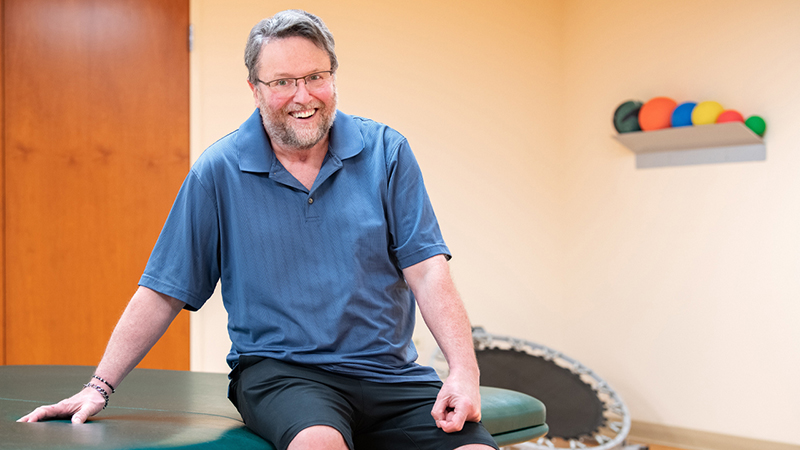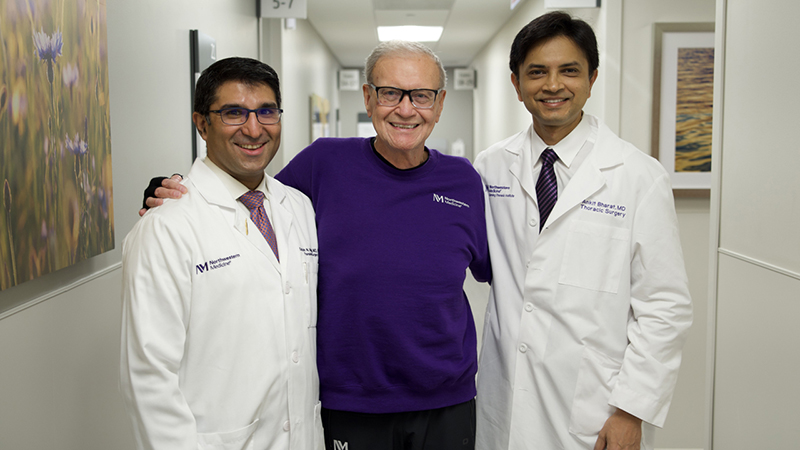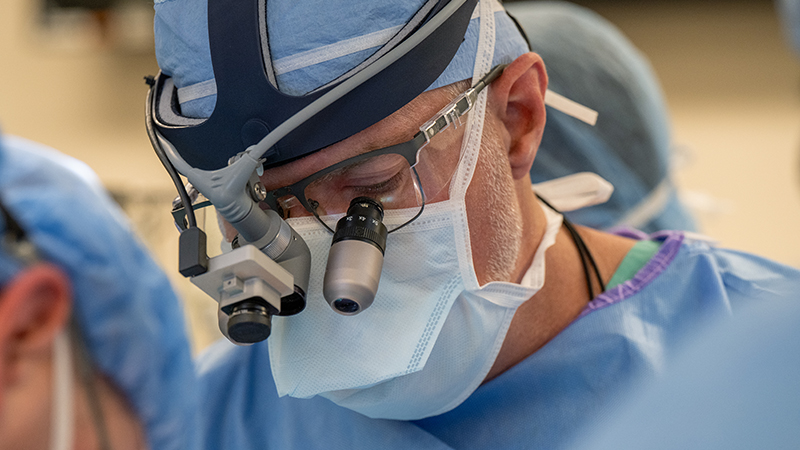A Professional Dancer Is Back on His Feet After a Paralyzing Injury
Physical Therapists Tap into Love of Dance to Help Patient Recover
Published June 2023
In late 2022, Mauricio Fernandez, a Lombard, Illinois, resident and classically trained ballet and tap dancer, fell headfirst down a flight of stairs. The accident caused a traumatic spinal cord injury that led to swelling around his spine and temporary paralysis of his arms and legs.
“I was conscious, but my first thought was, ‘Where are my arms and legs?’ Dancing is my whole life and I can’t do that without my arms and legs,” says Mauricio.
Mauricio underwent emergency surgery to decompress the spine to prevent additional nerve damage. Within a week, he was transferred to Northwestern Medicine Marianjoy Rehabilitation Hospital, where his physical therapists used advanced therapeutic techniques to help him regain mobility and get him back on his feet again.
“When Mauricio came to Marianjoy Rehabilitation Hospital, he had extreme weakness in his arms and legs. He couldn’t move his fingers and had little movement in his right ankle and foot,” says Anita Kou, MD, medical director of the Northwestern Medicine Spinal Cord Injury Program at Marianjoy.
Understanding Spinal Cord Injuries
Every spinal cord injury is different. A spinal cord injury is a sudden injury that can result in a bruise, a partial injury or a complete injury to the spinal cord.
- Incomplete spinal cord injury: In this type of injury, the spinal cord can still carry some messages to and from the brain to the rest of the body.
- Complete spinal cord injury: The spinal cord is unable to carry messages to and from the brain to the rest of the body, resulting in a near-total loss of motor and sensory function.
Spinal cord injuries are classified according to the type of loss of motor and sensory function. The main classifications are:
- Quadriplegia (also called tetraplegia): Involves a loss of movement and feeling in all four limbs (arms and legs) and in the chest muscles, sometimes requiring a mechanical breathing machine
- Paraplegia: Involves a loss of movement and sensation in the lower half of the body
Every patient with a spinal cord injury has a different prognosis, treatment plan and outcome.
Leaping Into Recovery
Mauricio’s team of therapists incorporated dance into his recovery plan, starting with the rapid up-and-down motion of tap dancing, which Mauricio began doing in a wheelchair to strengthen his leg and foot muscles. Once his balance improved, he moved to the parallel bars for ballet poses to strengthen his core and arms. When he was ready for more dynamic moves, the 50-foot track of the ZeroG® Gait and Balance Training System gave him plenty of room for jumps and leaps. This robotic body-weight support system is on an overhead track that helped him stay balanced and practice dance moves without the risk of falling.
“Mauricio was already motivated, and by including something he loves into his therapy, we’ve seen amazing progress and expect him to continue getting stronger over the next several months,” says Dr. Kou.
“Dance is so familiar to Mauricio that by tapping into that muscle memory, it really helped his recovery,” says Julie Zell, PT, physical therapist at Marianjoy. “It made therapy fun. Mauricio even taught the staff a dance routine that we all did together!”
Mauricio was discharged from inpatient therapy after a month of intense treatment and continued outpatient therapy to work on returning to full form. Just two months after his accident, he went back to work teaching at a dance studio in Countryside, Illinois.
“While I may never get back to doing ballet lifts, the only solution is to keep putting my best foot forward every day,” Mauricio says. “I hope my story can inspire my students and other people out there to overcome barriers.”






